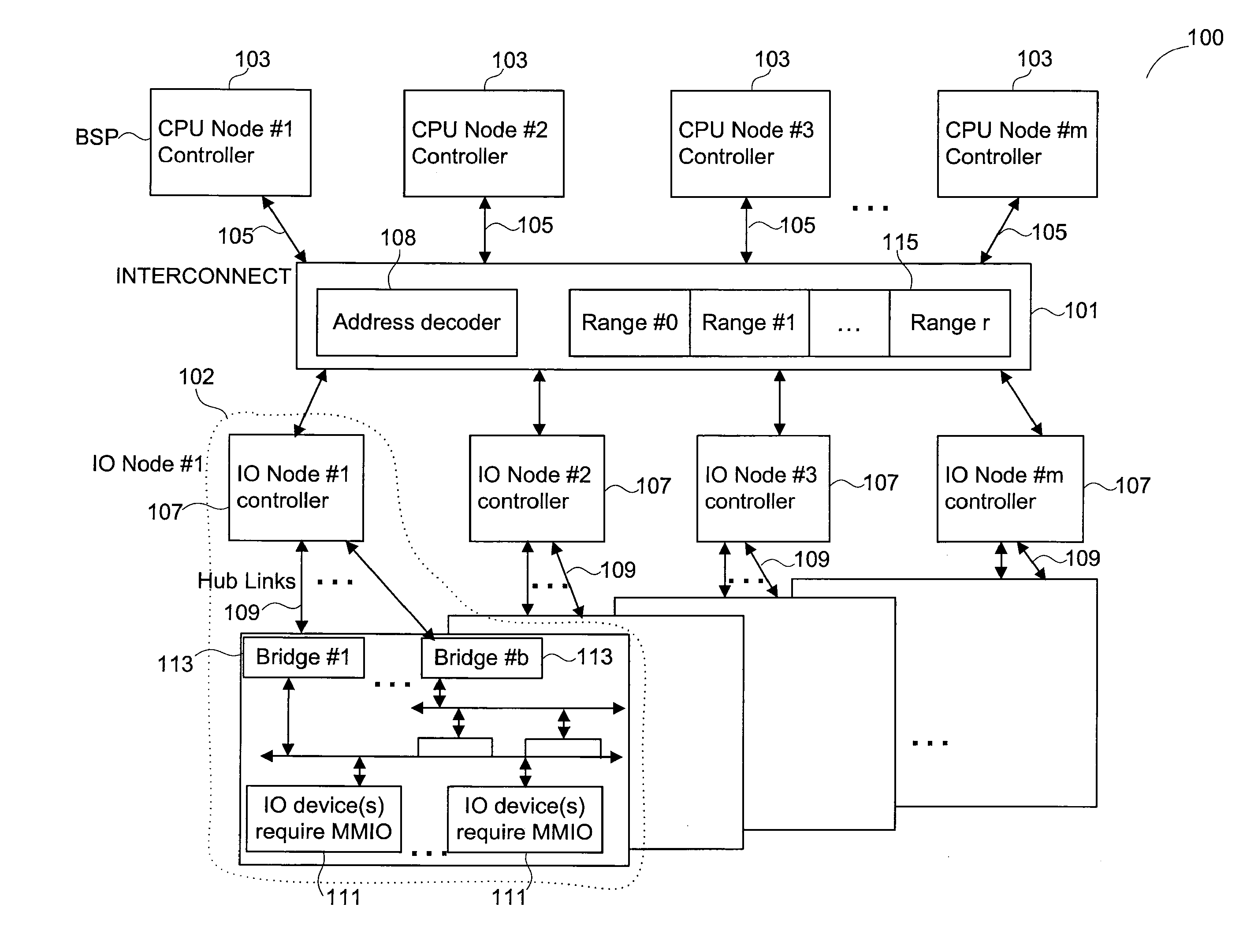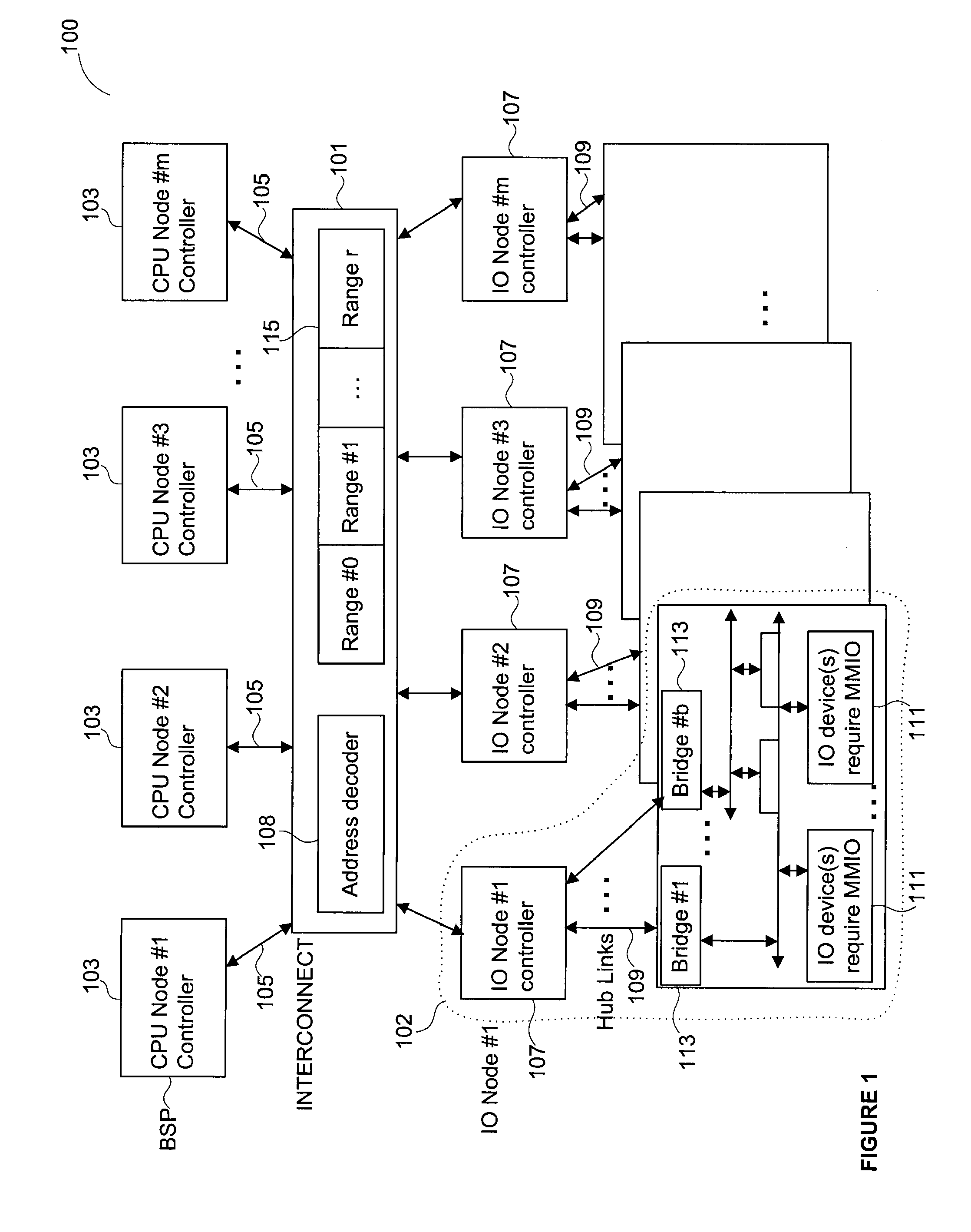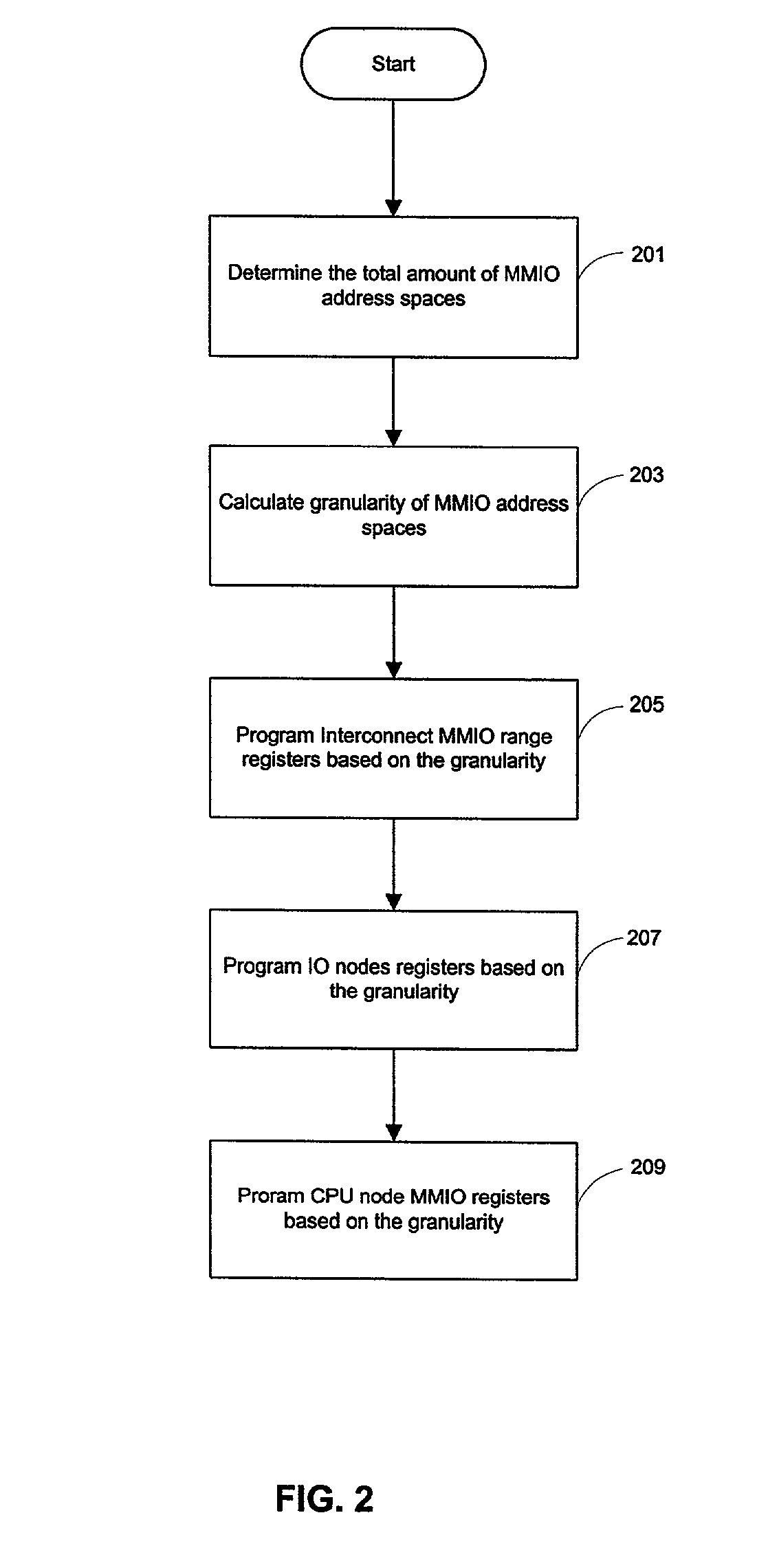Dynamic determination of memory mapped input output range granularity for multi-node computer system
a computer system and multi-node technology, applied in the direction of memory adressing/allocation/relocation, digital computers, instruments, etc., can solve the problems of consuming substantial resources, conventional “base” and “size” type registers fail to provide scalability for memory mapping in a multi-node computer system
- Summary
- Abstract
- Description
- Claims
- Application Information
AI Technical Summary
Benefits of technology
Problems solved by technology
Method used
Image
Examples
Embodiment Construction
[0013]FIG. 1 illustrates a multi-node computer system 100 that typically contains a plurality of central processing units (CPU) node controllers 103 (#1, #2, #3, . . . #n), an interconnect 101, and a plurality of Input / Output (IO) nodes 102. The CPU nodes controllers 103 and the IO nodes 102 are all coupled to the interconnect 101. Typically, each of the CPU node controllers 103 is coupled to the interconnect 101 through a scalability port 105. A multi-node computer system 100 may also include multiple interconnects 101. Each of the interconnects 101 routes commands and data among different nodes and devices in the system 100. The details of an interconnect-based multi-node computer system are well known in the art, and are not included here to avoid obscuring a clear description of the present invention.
[0014]Within each IO node 102, there is typically included an IO node controller 107, and bridges 113 and IO devices 111. Different groups of IO devices 111 are respectively coupled...
PUM
 Login to View More
Login to View More Abstract
Description
Claims
Application Information
 Login to View More
Login to View More - R&D
- Intellectual Property
- Life Sciences
- Materials
- Tech Scout
- Unparalleled Data Quality
- Higher Quality Content
- 60% Fewer Hallucinations
Browse by: Latest US Patents, China's latest patents, Technical Efficacy Thesaurus, Application Domain, Technology Topic, Popular Technical Reports.
© 2025 PatSnap. All rights reserved.Legal|Privacy policy|Modern Slavery Act Transparency Statement|Sitemap|About US| Contact US: help@patsnap.com



